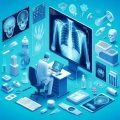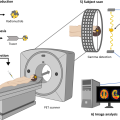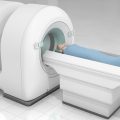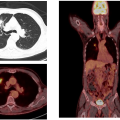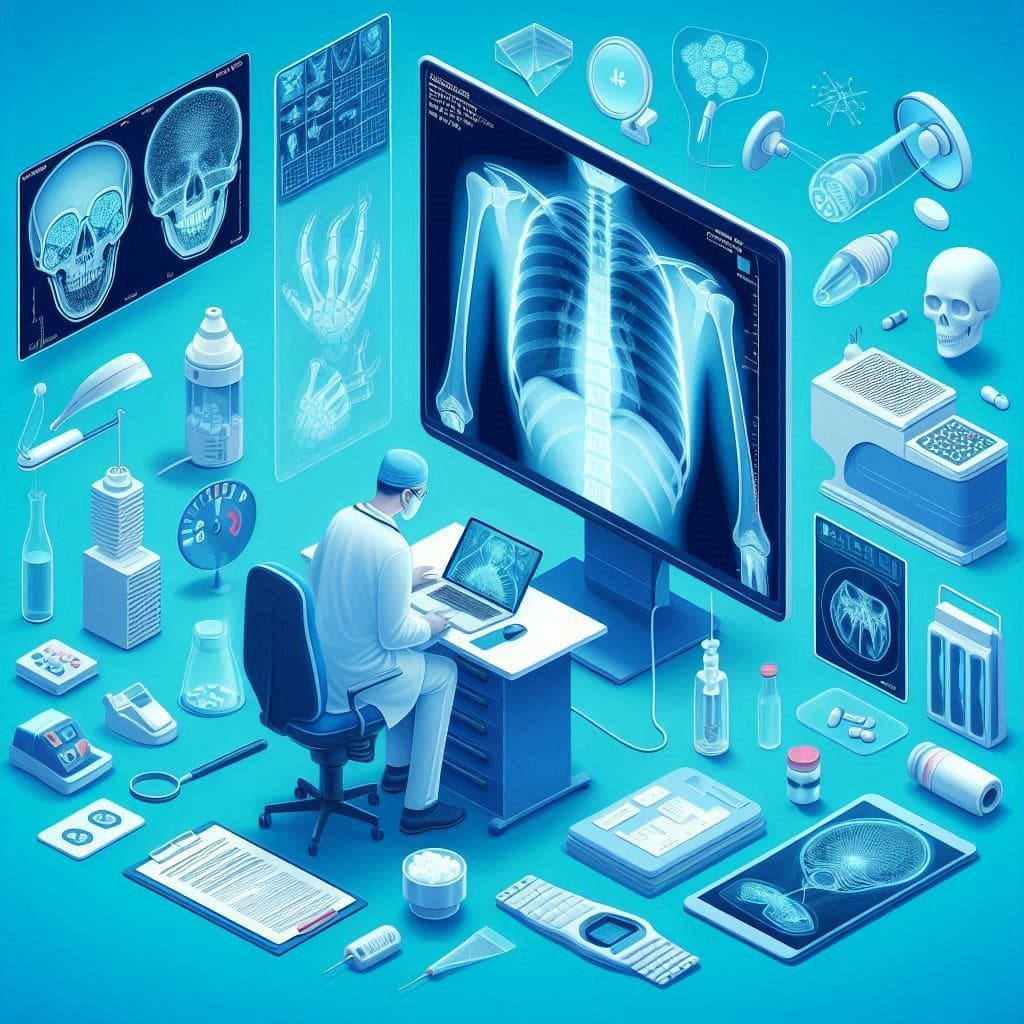
Benefits of X-Rays in Medicine
X-rays are considered one of the most prominent diagnostic tools that have significantly contributed to improving treatment methods and enhancing the quality of healthcare. The technology of X-rays has advanced considerably since its discovery, and it has become an essential part of diagnostic processes in medicine. In this article, we will detail the benefits of X-rays in medicine, focusing on their use in diagnosing fractures and sprains and their role in diagnosing lung diseases. We will also explore how Dokki Scan can efficiently provide these services through their website dokki-scan.com.
Use of X-Rays in Fractures and Sprains
Understanding X-Rays and Their Applications
X-rays are a type of electromagnetic radiation that can penetrate different tissues in the body, allowing detailed images of organs and bones to be obtained. The effectiveness of X-rays in diagnosing fractures and sprains depends on their ability to provide accurate images of bones and structural abnormalities. The images produced by X-rays are displayed on films or digital screens, where bones and internal tissues appear in different colors based on their density.
Diagnosing Fractures with X-Rays
X-rays are a crucial tool for diagnosing fractures, providing clear images of bones that help doctors determine the presence and severity of the fracture. There are several practical applications of X-rays in diagnosing fractures, including:
Diagnosing New Fractures: In the event of a sharp injury or accident, X-rays can be used to determine if there is a fracture in the bones. X-rays clearly show the location and severity of the fracture, assisting doctors in choosing the appropriate treatment. Additionally, the images captured with X-rays can help determine whether the fracture is closed or open.
Monitoring Old Fractures: After starting treatment, X-rays are used to monitor the healing process of the bones. X-rays can reveal how much improvement has occurred at the fracture site, helping doctors adjust the treatment plan if necessary. The images show how bone healing is progressing, providing important information about the effectiveness of the treatment.
Determining Fracture Types: X-rays allow doctors to accurately determine the type of fracture. Whether the fracture is simple, comminuted, or compound, X-rays can provide detailed information about the fracture, helping to decide the most appropriate treatment. For example, comminuted fractures may require surgery to realign the bones, while simple fractures may only need a cast.
Diagnosing Sprains with X-Rays
Sprains occur when a ligament is stretched beyond its normal range due to abnormal movement. While X-rays are more effective in diagnosing fractures, they can also play a role in diagnosing sprains, especially when there is suspicion of bone injury. Through the use of X-rays, doctors can:
Identify Associated Bone Injuries: In some cases, sprains may be accompanied by indirect bone injuries. X-rays help in detecting any fractures or changes in the bones that may result from the sprain, providing additional information about the condition.
Rule Out Serious Injuries: Symptoms of sprains can be similar to those caused by serious bone injuries. Using X-rays, doctors can rule out any serious injuries and ensure that appropriate treatment for the sprain is provided.
Role of X-Rays in Diagnosing Lung Diseases
Diagnosing Lung Diseases with X-Rays
X-rays play a pivotal role in diagnosing lung diseases due to their ability to provide detailed images of the lungs. X-rays are an important tool for detecting a variety of lung conditions, including:
Lung Tumors: X-rays can detect lung tumors, whether malignant or benign. Tumors appear as abnormal masses in X-ray images, helping doctors determine their presence and location. Sometimes, tumors may be large enough to be visible on X-rays, while smaller tumors might require further tests such as computed tomography (CT) scans for more detailed information.
Pneumonia: Conditions such as pneumonia can be diagnosed using X-rays, as they reveal changes in lung structure, such as fluid accumulation or tissue changes. X-ray images help determine the extent of the inflammation and provide the necessary information for prescribing appropriate treatment.
Airway Obstruction: X-rays are useful in diagnosing airway obstruction conditions, such as chronic obstructive pulmonary disease (COPD). X-rays show changes in lung structure and the impact of the disease on the lungs’ ability to function properly.
Heart Size and Shape: In some cases, X-rays can reveal changes in the size and shape of the heart, which can be beneficial in evaluating lung diseases related to heart conditions. Changes in heart size may indicate issues with the lungs or circulatory system.
Monitoring and Follow-Up with X-Rays
X-rays are also used to monitor the progression of lung diseases and assess patients’ responses to treatment. X-rays can provide valuable information about the effects of treatment and the overall health status, including:
Evaluating Treatment Progress: After starting treatment, X-rays can provide information about the response of the lungs to the treatment and assess improvement. This helps in adjusting the treatment plan if necessary to achieve the best possible outcomes.
Monitoring Chronic Conditions: For chronic lung diseases, X-rays are used to track the progression of the condition and provide information about the effects of treatment and the response of the lungs to therapeutic plans. This follow-up helps doctors determine if the treatment is effective or if adjustments are needed.
Benefits of Using X-Rays in Medicine
Accuracy and Speed of Diagnosis
X-rays offer a quick and accurate means of obtaining detailed images of tissues, bones, and internal organs. This allows doctors to diagnose medical conditions effectively and provide timely treatment. X-ray images are clear and highly detailed, aiding in the early detection of medical conditions.
Identifying Injury Locations
X-rays help pinpoint the locations of injuries precisely, whether they are fractures in bones or conditions in soft tissues. This accuracy contributes to selecting the appropriate treatment and achieving better results. The images can reveal any abnormal changes in bones or tissues, providing crucial information for optimal treatment.
Providing Valuable Information for Treatment Planning
X-rays are an essential tool in treatment planning, offering information about the size and location of injuries or tumors. This information helps doctors determine the best treatment options and create a tailored treatment plan. The data provided by X-rays can enhance treatment quality and increase the chances of complete recovery.
Services at Dokki Scan
At “Dokki Scan,” we are committed to delivering the highest standards of quality in X-ray services. We use the latest technologies to ensure accurate and comprehensive imaging, contributing to improved diagnostic and treatment processes. We offer a range of X-ray services, including:
Modern Technologies
We utilize the latest digital X-ray devices that provide high clarity and reduce radiation exposure. Our advanced technologies include state-of-the-art equipment that aids in obtaining precise images and enhancing patient experience. Digital X-rays offer clear images with detailed information, improving the effectiveness of medical diagnoses.
Personalized Care
Our specialized medical team is dedicated to providing a comfortable and safe medical experience for patients. We ensure that the steps of the examination are explained clearly and address all questions to ensure a stress-free experience. We offer personalized support for each patient, ensuring that every imaging process is performed with the highest levels of comfort and safety.
Medical Consultations
We provide medical consultations to help you understand the results of your scans and plan the next steps in treatment. Our team of radiologists and specialists is available to offer support and advice based on the scan results. We are here to provide the necessary information to assist you in making informed health decisions.
Summary of the Benefits of X-Rays in Medicine
X-rays remain a vital tool in medicine, providing precise and comprehensive insights that assist in diagnosing health conditions and planning treatment. From their prominent use in diagnosing fractures and sprains to their role in identifying lung diseases, X-rays continue to be an essential component of healthcare. X-rays contribute to enhancing the quality of healthcare by providing accurate and timely information about patients’ health conditions.
If you need an X-ray examination or wish to consult about your health condition, we invite you to visit “Dokki Scan” through our website dokki-scan.com. We are here to support you and provide the necessary care to ensure your health and well-being. By utilizing the latest technologies and best medical practices, we aim to deliver accurate diagnoses and effective follow-up for your health needs.
Feel free to contact us to schedule an appointment or get more information about our services. Your health and safety are our top priorities, and we are here to ensure the best possible medical care.
Latest Blogs
- All Posts
- Blog

